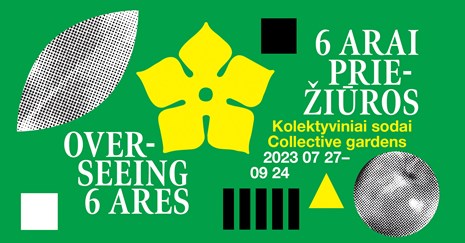Overseeing 6 ares

Overseeing 6 Ares
Collective Gardens
Whether it was the act of digging into the ground with your hands, feeling the soil under your nails and forging a connection with nature, or building an idyllic summer house to consolidate your status as a successful Soviet citizen, community gardens offered numerous avenues for self-expression. The regime not only tolerated such expression, but actively encouraged it for various reasons. It promoted active participation in community gardening, promising citizens access to tools, designs for summer houses, seedlings, and even public transport tickets - at least in theory. In practice, the reality was much more lacklustre. Nevertheless, the establishment of community gardens was a significant infrastructural and ideological project that required pretext, planning, and resources. So why bother in the first place? And what should come of it?
The initial decree calling for the widespread establishment of community gardens in the Soviet republics was issued in 1949. The beginning of this initiative coincided with significant food and housing shortages, but over time, it evolved to encompass not only pragmatic goals but also more profound spiritual aspirations of the government. Headlines in journals aligned with the official ideology, such as when Our Gardens proclaimed: 'The garden enriches a man'. Meanwhile, a parallel world was emerging in the vast expanse of the hundreds of thousands of 600-square-metre plots - from menial labour to financial schemes, from petty intrigues to personal utopias, and even discussions between members of the cultural elite and dissidents. Requiring constant care from the gardeners, these 600-square-metre allotments and the processes that took place in them would not escape the scrutiny of the government. The 600 square metres of land became a space of political, economic, architectural, and cultural conflict, but also one of opportunity, where the ailing system and its subjects found themselves entangled in a complex love-hate relationship with the gardens.
Over the decades, community gardens have become a deeply ingrained phenomenon in our collective consciousness. Initially established on the barren, abandoned land of former military bases or collective farms, these allotments are now flirting with suburban lifestyles or being reborn in new forms, such as community initiatives. Our relationship with these strange, seemingly liminal places has been reflected on by creators across various fields, including painters, contemporary artists, architects, photographers, television producers, and writers. Through their artistic works and archival materials, the exhibition showcases the diverse visions and contradictions of collective gardens: the challenges posed by infrastructure, the wide variety of summer houses, the gardeners' penchant for risky undertakings, and the gardens themselves with their constant demand for maintenance, being both binding and liberating at the same time.
Organiser: National Gallery of Art of the Lithuanian National Museum of Art
Creators of artworks and other exhibits: Algimantas Aušiūra, Eugenijus Barzdžius, Feliksas Bielinskis, Jonas Buračas, Juozas Čepavičius, Kazys Daukša, Andrius Erminas, Eglė Gineitytė, Gintarė Grigėnaitė, Linas Jusionis, Stanislovas Karanauskas, Birutė Kasperavičienė, Jonas Klimašauskas, Vsevolod Kovalevskij, Feliksas Lukauskas, Ignas Maldus, Algirdas Mulvinskas, Algimantas ir Vytautas Nasvyčiai, Domantas Pigulevičius, Upė Pilitauskaitė, Lukas Pilkauskas, "PUPA Life over space", Mindaugas Skudutis, Rūta Spelskytė, Vladas Suncovas, Algimantas Švėgžda, Andrej Vasilenko
Curators: Goda Aksamitauskaitė, Matas Šiupšinskas
Architect: Gabrielė Černiavskaja
Designer: Laura Grigaliūnaitė
Architect-producer: Mindaugas Reklaitis
Translators: Paulius Balčytis, Erika Lastovskytė-Fritolli
Editors: John W. Fail, Laura Patiomkinaitė-Čeikė, Ieva Puluikienė
Financed by Lietuvos kultūros taryba
Partner: Lietuvos kino centras Sponsored by Exterus, Fundermax
Exhibits lent by: Digital Tsunami, Kretinga Museum, The Lithuanian National Museum of Art, Lithuanian Central State Archives, Lithuanian Film Centre, Lithuanian Archives of Literature and Art, Martynas Mažvydas National Library of Lithuania, Lithuanian State Modern Archives, MO Museum, Panevėžys County Gabrielė Petkevičaitė-Bitė Public Library, Utena Regional History Museum, Ukmergė Regional History Museum, Vilnius Regional State Archives, Rasa Chmieliauskaitė, Dalius Gerulaitis, Vytas Petrauskas, Irena ir Stasys Vyžintai, Ieva Šalomskienė, Sigita Šiupšinskaitė


